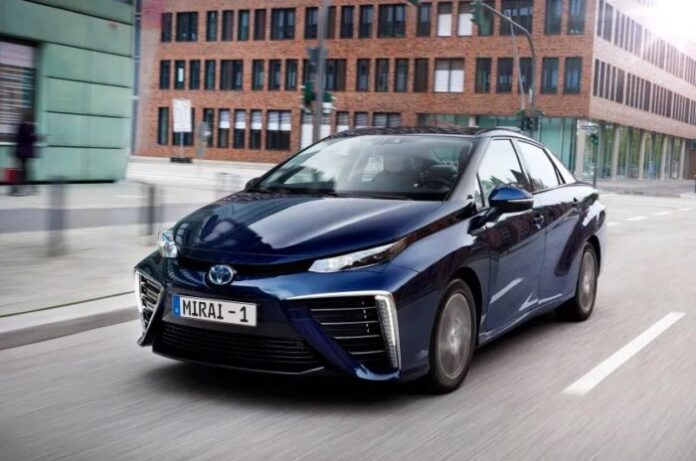Hydrogen-powered cars seem to be one of the motor industry’s best-kept secrets, but hydrogen technology really does offer an alternative to hybrid and Electric Vehicles. Here are some key takeaway points to get you started on hydrogen-powered cars, as advised by ShowPlatesExpress.com.
- Manufacturers – there is not a great deal of choice, and the industry seems to be controlled by the Asian carmakers, Hyundai, Honda, and Toyota, but nonetheless, these are all great brands with excellent reputations.
- Exhaust products – only water.
- Silent motoring – the vehicles are silent when you are driving, but Hyundai has installed a little electronic jingle to confirm you have switched on the ignition, and the engine is running.
- New kids on the block – rather unusually in a market dominated by huge long-established manufacturers, there are some new, small players in the hydrogen cell car market.
- Hydrogen fuel cell – this is where hydrogen and oxygen combine to generate electricity with the only by or waste product from this process being water.
- No harmful gasses – hydrogen cell-powered vehicles do not generate any harmful gasses but making hydrogen does require energy often generated by fossil fuels so not perhaps quite so attractive as a green technology if you compare it to an EV where an owner can generate his own electricity from solar panels or wind power at home and then feed this into the vehicle via a home charging point.
- No moving parts – the fuel cell has no internal moving parts so is cheaper to maintain than a conventional internal combustion engine
- Range – pretty good, 414 miles for the Hyundai Nexo
- Filling time – the same as a conventional petrol or diesel vehicle and this is where hydrogen power scores highly over EVs at the moment
- Safety – hydrogen is highly explosive, and there are safety concerns amongst motorists, garage owners, and suppliers
Safety concerns

They are on the top of the list for many interested motorists. If you consider the Mirai made by Toyota, that features triple-layer hydrogen tanks, five times stronger allegedly than stainless steel petrol tanks. The Honda Clarity uses aluminum and carbon fiber to withstand heat and pressure, but concerns remain. Hydrogen cell-powered vehicles are not currently allowed to use the Channel Tunnel between England and France due to the risks associated with flammable gasses. And garages also have concerns about the gasses; there are potential risks to the public and staff on forecourts that have hydrogen pumps, and there has already been at least one explosion in South Korea.
Range, another consideration

One of the selling points for the Riversimple Rasa is local usage; the car is aimed at short distance drivers and with only 17 refueling pumps across the whole of the UK compared to 75 in Germany.
It’s chicken and egg – the public won’t commit to the new technology unless there are more refueling points, and manufacturers won’t supply them and the vehicles until they see some commitment shown by British motorists towards hydrogen-powered vehicles. So currently, it is a stalemate. There is a far bigger push directed towards EVs; charging points are becoming more plentiful, and there are financial incentives to install home charging points, a compulsory requirement for all new build houses now in the UK with off-road parking. The EVs are also greener.
There is a European pro-hydrogen group called H2Europe, which would like to see a corridor of refueling pumps on the north to the south layout, which could facilitate trans-European haulage on this cleaner fuel. This is because of concerns scaling up EVs into large, heavier vehicles and questions over whether electric technology is actually really only suitable for the private car market. Large commercial vehicles need to be constantly moving, or profits are affected. The time taken to recharge a haulage vehicle would probably make the whole exercise uneconomic.

Compare this situation in Europe to the States where there are 42 hydrogen filling stations in California alone. The Americans have the opposite problem in that there are more hydrogen-powered vehicles than filling stations to service them. The States incentivize new purchasers of this technology with a $2,500 subsidy, but even the Americans are behind the curve if you look at some of the Asian countries.
The Chinese government has made a commitment to more than one million hydrogen fuel cell vehicles on the road by 2024, with 1,000 filling stations to service them. They have even cut subsidies to the EV sector in order to promote hydrogen technology ahead of it. Japan is making similar noises though with less ambitious figures, but the anticipation is that they will use the Tokyo Olympics this year to showcase the new technology. It’s no coincidence that the three current leading hydrogen cell car manufacturers are all Asian carmakers.
Watch this space

Toyota will be bringing its latest hydrogen-powered vehicle, the Mirai, into the market at some point in 2024, and German giants, BMW and Audi, are also working on new entrants to this market, although BMW is not expected to launch until 2024 and Audi in 2025. If you fancy something rather alternative, then take a look at Riversimple in Wales and support a new manufacturer doing things just a little bit differently.
Riversimple has used three successful crowdfunding initiatives to date to launch its Rasa car, which are available to lease not buy. The car’s rather unusual name is taken from the Latin phrase, tabula rasa’ which means, ‘clean slate.’ Originally, Riversimple’s fuel cell was designed to power forklift trucks, but a change in direction has led to a refreshingly new player in the motor market.
It would seem that if the safety concerns are adequately addressed and also the means of creating hydrogen from a green source, then this technology could easily rival EVs with a good range as a start point and, currently, much faster refueling times.





![Calgary’s Hottest Neighborhoods for Luxury Homebuyers [2024]](https://thewashingtonote.com/wp-content/uploads/2024/04/Calgary-324x160.png)



